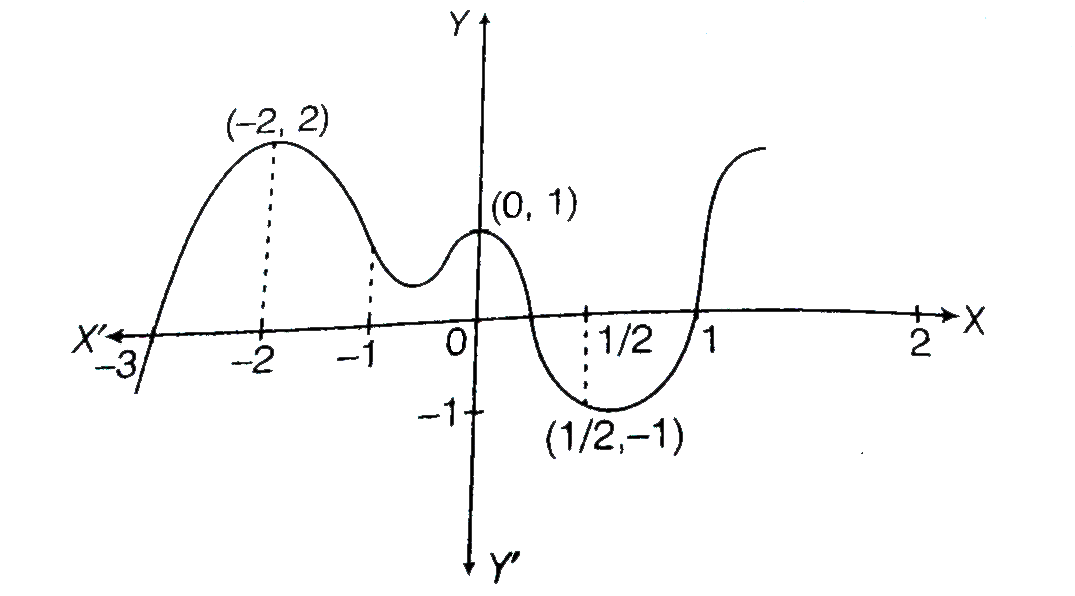A variable plane is at constant distance 3 from origin and meets the axis in X,Y,Z planes through X,Y,Z parallel to coordinate planes are made. If Pbe the point of intersection of above made planes, given P(α,β,γ) then αβγ√α2β2+β2γ2+γ2α2=?
The correct Answer is:3
To solve the problem step by step, we will derive the necessary equations and find the required value.
Step 1: Understand the equation of the plane
The equation of a plane at a distance d from the origin can be expressed as:
xA+yB+zC=1
where A,B,C are the intercepts on the x, y, and z axes respectively.
Step 2: Use the distance formula
The distance D from the origin (0, 0, 0) to the plane is given by:
D=|Ax1+By1+Cz1+D|√A2+B2+C2
For our case, since the plane is at a constant distance of 3 from the origin, we have:
3=|0+0+0+D|√A2+B2+C2
This simplifies to:
|D|=3√A2+B2+C2
Step 3: Set up the plane equation
Assuming the plane equation is:
xA+yB+zC=1
We can rearrange it to:
x+yBA+zCA−A=0
This implies D=−A.
Step 4: Substitute into the distance equation
Substituting D=−A into the distance equation gives:
|−A|=3√A2+B2+C2
Thus:
A=3√A2+B2+C2
Step 5: Square both sides
Squaring both sides results in:
A2=9(A2+B2+C2)
Rearranging gives:
A2(1−9)=9(B2+C2)
−8A2=9(B2+C2)
This implies:
1A2+1B2+1C2=19
Step 6: Express in terms of α,β,γ
Let α=A,β=B,γ=C. Then:
1α2+1β2+1γ2=19
Step 7: Find the required expression
We need to find:
αβγ√α2β2+β2γ2+γ2α2
From the previous result, we can express:
α2β2γ2=11α2+1β2+1γ2=9
Thus, αβγ=3.
Step 8: Substitute back into the expression
Now we substitute back:
3√α2β2+β2γ2+γ2α2=3
Conclusion
Thus, the final answer is:
αβγ√α2β2+β2γ2+γ2α2=3
The equation of a plane at a distance d from the origin can be expressed as:
xA+yB+zC=1
where A,B,C are the intercepts on the x, y, and z axes respectively.
The distance D from the origin (0, 0, 0) to the plane is given by:
D=|Ax1+By1+Cz1+D|√A2+B2+C2
For our case, since the plane is at a constant distance of 3 from the origin, we have:
3=|0+0+0+D|√A2+B2+C2
This simplifies to:
|D|=3√A2+B2+C2
Assuming the plane equation is:
xA+yB+zC=1
We can rearrange it to:
x+yBA+zCA−A=0
This implies D=−A.
Substituting D=−A into the distance equation gives:
|−A|=3√A2+B2+C2
Thus:
A=3√A2+B2+C2
Squaring both sides results in:
A2=9(A2+B2+C2)
Rearranging gives:
A2(1−9)=9(B2+C2)
−8A2=9(B2+C2)
This implies:
1A2+1B2+1C2=19
Let α=A,β=B,γ=C. Then:
1α2+1β2+1γ2=19
We need to find:
αβγ√α2β2+β2γ2+γ2α2
From the previous result, we can express:
α2β2γ2=11α2+1β2+1γ2=9
Thus, αβγ=3.
Now we substitute back:
3√α2β2+β2γ2+γ2α2=3
Thus, the final answer is:
αβγ√α2β2+β2γ2+γ2α2=3
Similar Questions
Knowledge Check
The reflection of the point P(α,β,γ) in the xy-plane is
A(α,β,0)B(0,0,γ)C(−α,−β,γ)D(α,β,−γ)If →A makes an angle α,β and γ from x,y and z axis respectively then sin2α+sin2β+sin2γ=
A0B1C2D3The distance of the point P (α,β,γ) from x-axis is
A|α|B√α2+β2C√β2+γ2D√γ2+α2
If α,β,γ are the roots of x3+px2+qx−r=0 then α2+β2+γ2=
View SolutionIf a line makes anles α,β,γ with the coordinate axes, porve that sin2α+sin2β+sin2γ=2
View SolutionIf 2x3+3x2+5x+6=0 has roots α,β,γ then find α+β+γ,αβ+βγ+γα and αβγ
View SolutionIf α,β,γ are the roots of the equation x3+4x+1=0 then (α+β)−1+(β+γ)−1+(γ+α)−1=
View SolutionIf 2sinαcosβsinγ=sinβsin(α+γ),thentanα,tanβandγ are in
View Solution


